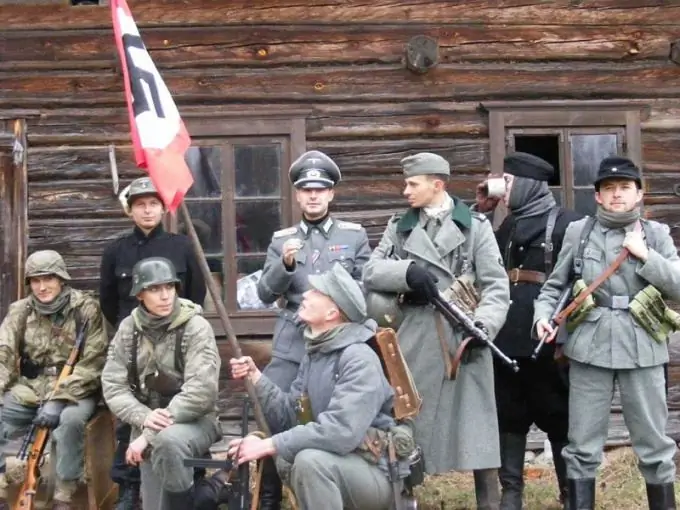- Author Antonio Harrison [email protected].
- Public 2023-12-16 07:44.
- Last modified 2025-01-22 21:44.
Betrayal is one of the worst sins. Dante's traitors were in the very last circle of hell not in vain. Betrayal on a historical scale cannot be justified. The phenomenon of collaborationism in the Second World War is referred to mass betrayal. But whether this was a betrayal can only be considered after decades

Collaboration is a unique phenomenon that emerged during the Second World War. Historians see the reason for the emergence of collaborationism in the unfair division of the world as a result of the Versailles Treaty. Artificial state borders destroyed historically established economic spaces and led to the creation of artificial ethnic enclaves.
The infringement of national interests became the basis for the creation of collaborationist forces in European countries.
In the Soviet Union, on the eve of World War II, a new socialist community was formed, for the sake of which a huge number of the population was repressed, destroyed, expelled from the country.
All possible centers of resistance were blocked by the totalitarian system. The hopes of the offended part of the population for the fall of the Stalinist dictatorship were connected with the German occupation.
Collaboration in the Soviet Union
There are three main groups of collaborators.
The first group includes national and ethnic minorities, although this phenomenon is more typical for European countries.
The second group includes residents of the occupied territories who came to serve in the executive bodies of the occupation regime. The occupation authorities attracted the local population to ensure the economic and industrial functioning of the occupied countries in favor of the military potential of Germany.
The majority of the population who came to the service of the occupation forces simply needed material support. Considering that in some territories the occupation lasted for several years, then cooperation cannot be regarded as ideological collaboration.
An example of ideological collaboration is the Lokot Republic - a puppet state with its own self-government on the territory of the Bryansk region. The ideological organizers saw cooperation with the German troops as a tool for fighting the Soviet regime.
The third group is punitive and military operations.
Collaboration military action
General Vlasov, founder of the Russian Liberation Army, is a symbol of collaboration. The question is ambiguous, and there is still no consensus on the reasons for the general's betrayal.
The émigré Cossacks, who suffered from the Soviet regime more than other strata of the Russian population, deliberately entered the service of German Nazism. But in this case, actions cannot be viewed as betrayal. The White Cossacks never swore allegiance to the Soviet state and considered cooperation with Germany as the liberation of Russia.
Collaboration as a phenomenon has been condemned by an international tribunal. But one should distinguish between forced and voluntary cooperation of the population of the occupied territories with the occupiers.






